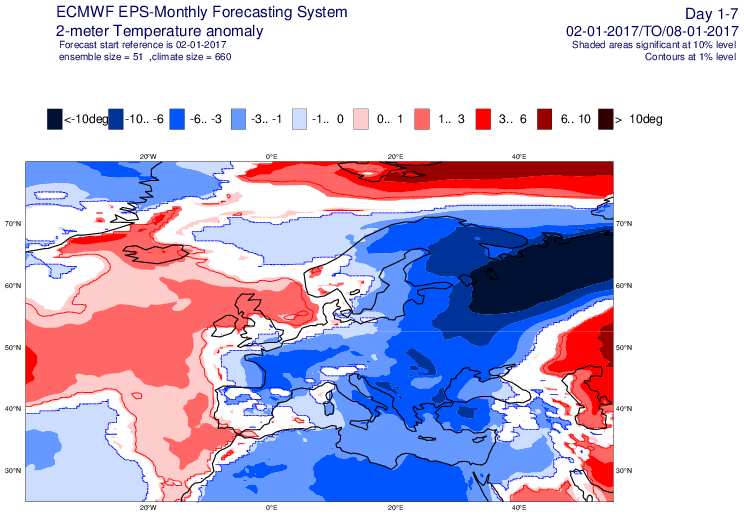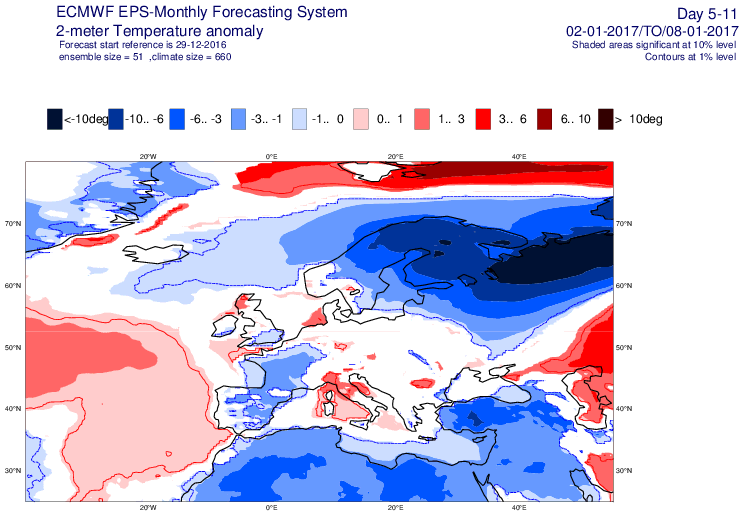
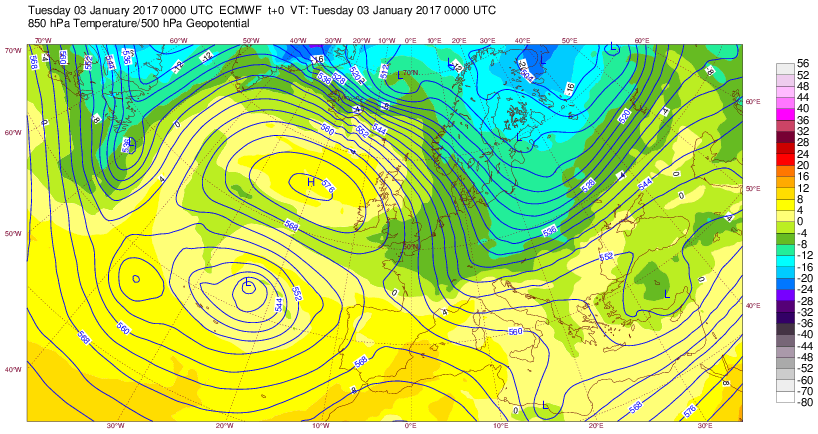
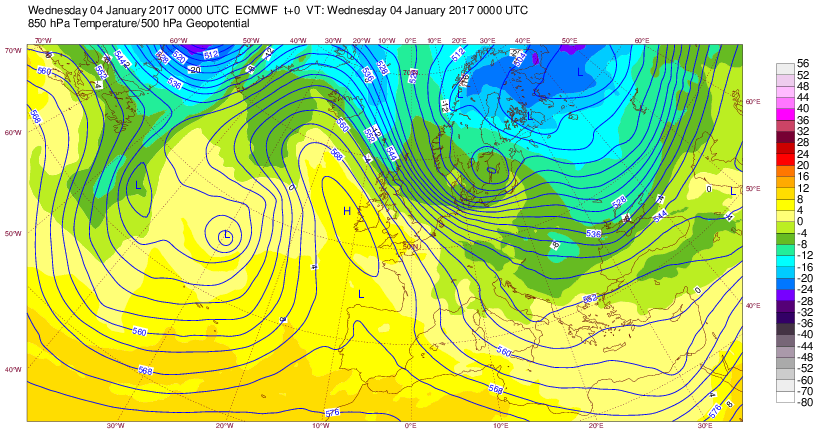
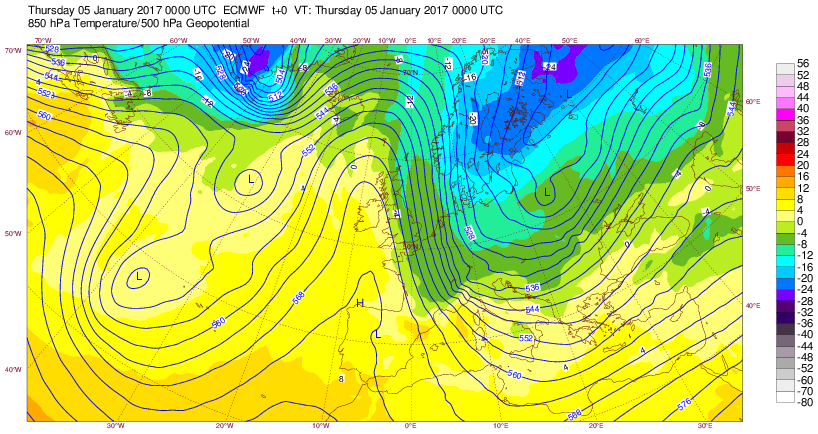

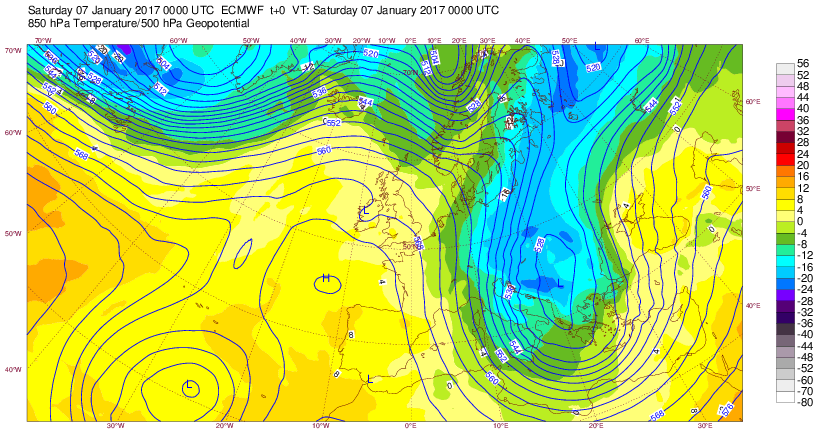

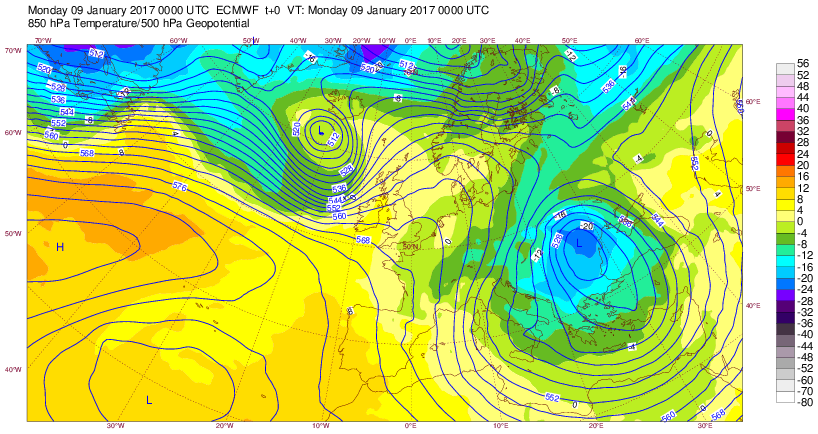
Status: Finalised Material from: Ivan, Linus
Discussed in the following Daily reports: |
Picture
During the first week of January the north-eastern central and south-eastern part of Europe was hit by a cold spell resulting in temperatures below 40C in Sweden and Finland and temperatures below 30C far down on the continent. In connection, many countries in southern and south-eastern Europe (e.g Italy, Greece and Turkey) were hit by severe snowfall. |
http://www.bbc.co.uk/news/world-europe-38546998
The plots below shows analyses of z500 and t850 for the period 2-9 January.









The plot above shows backward trajectories, starting on 1 January and ending on 9 January around Sofia at 850 hPa level.
The plots below show EFI and SOT for 2-metre temperature day 1 as a proxy for analysis of how extreme the temperature were from 2 to 9 January.

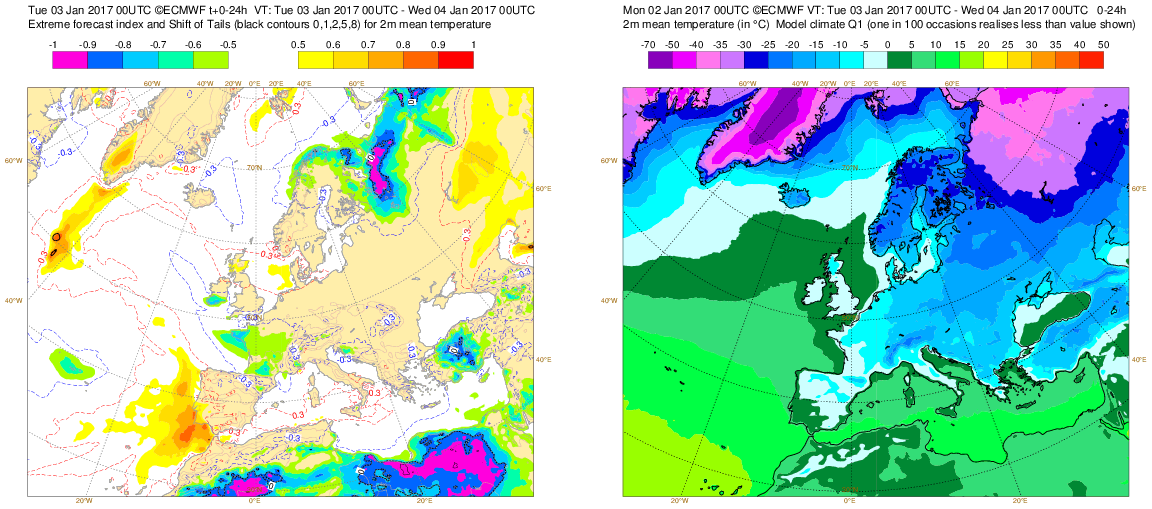
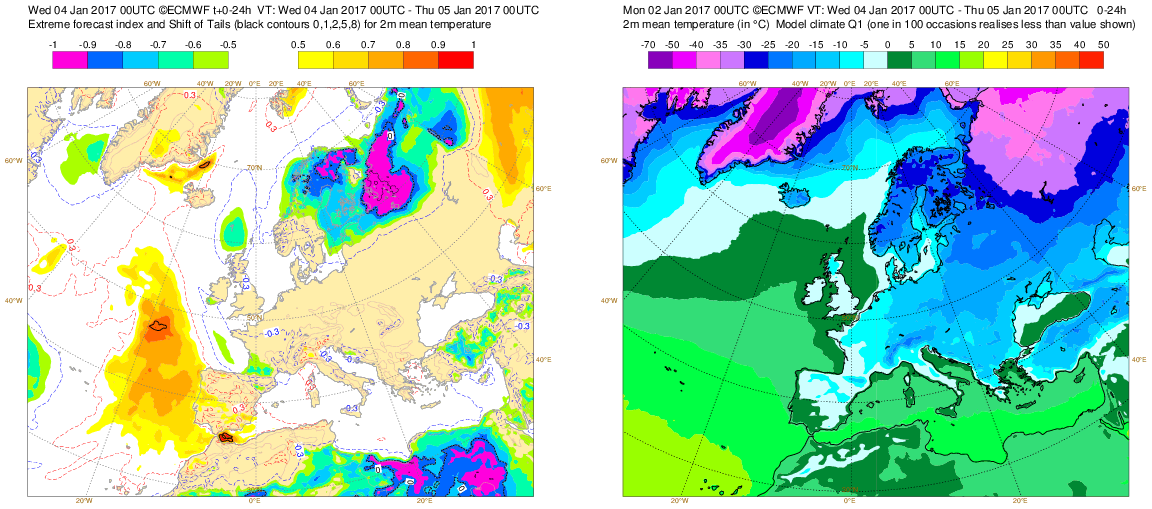
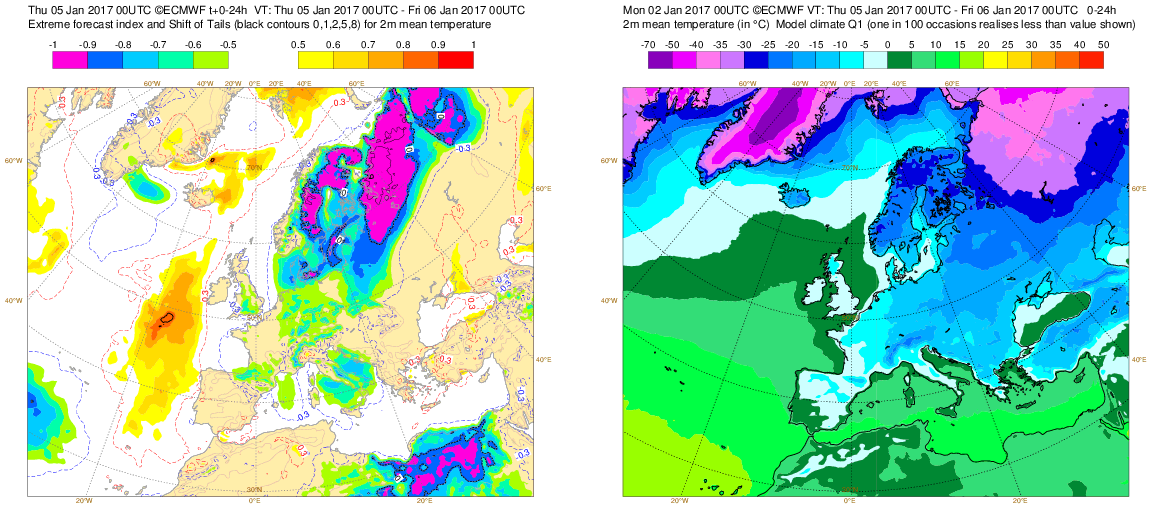
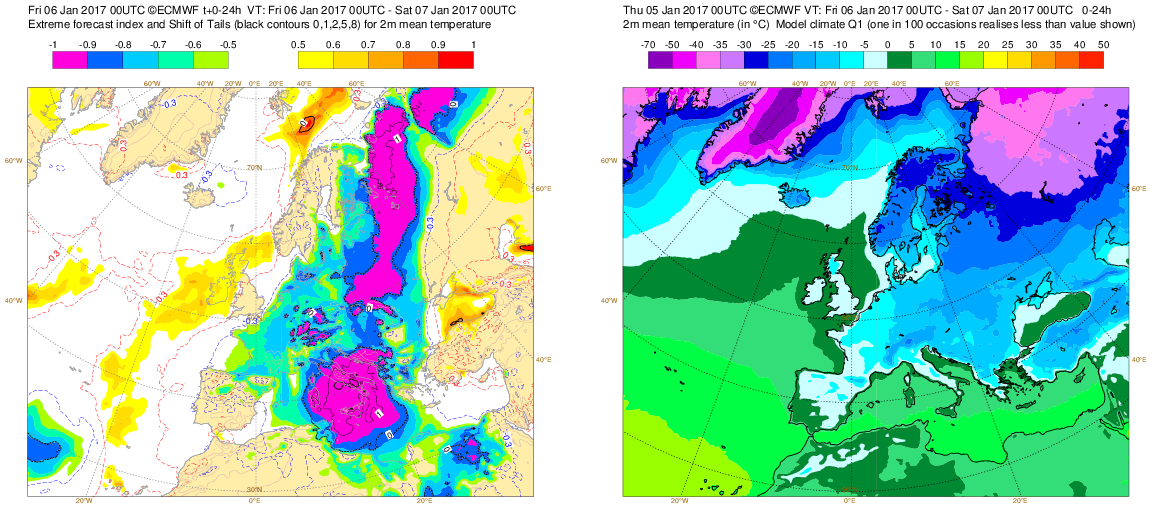
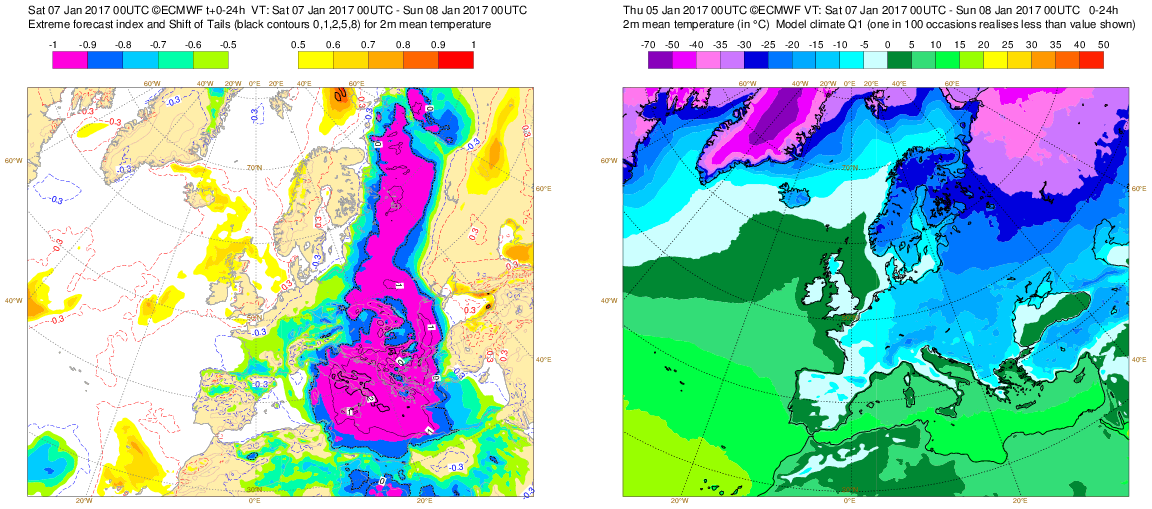
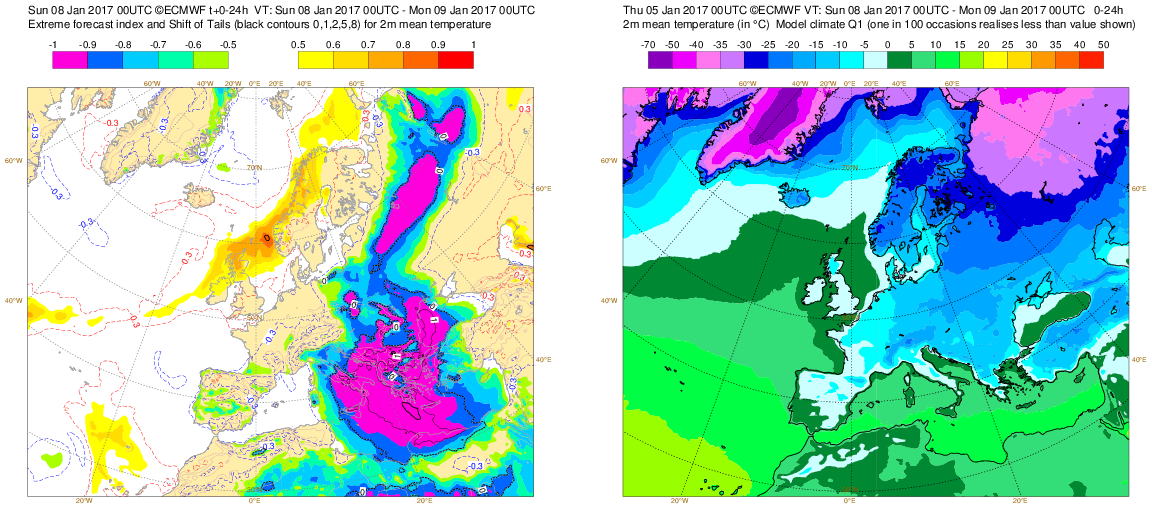
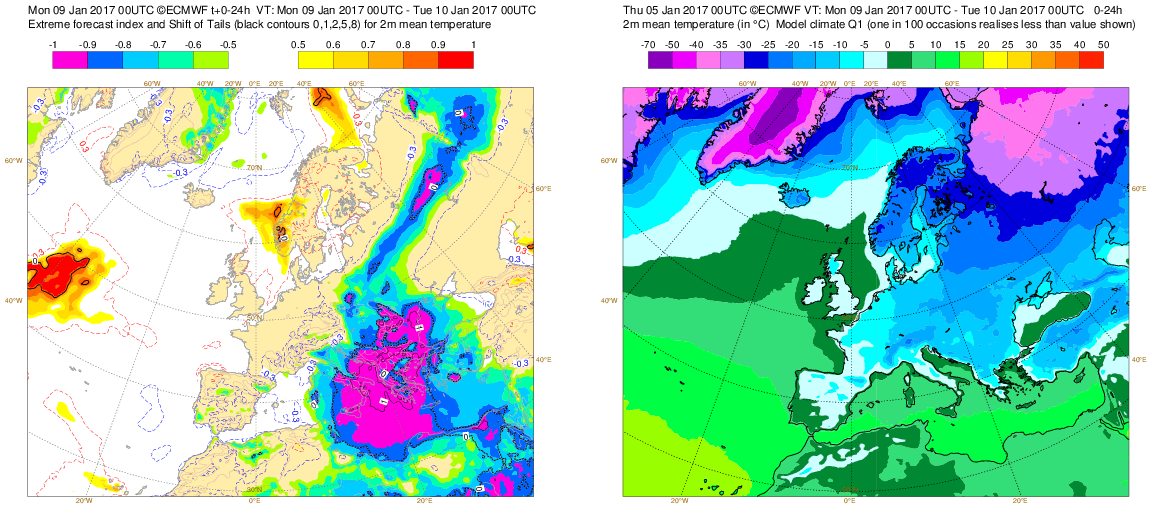
One of the most affected countries by heavy snowfall was Bulgaria. Two major snowfall events caused by Mediterranean cyclones hit the country with the most affected area being eastern and especially north-eastern Bulgaria where many roads were closed and many households were left without power due to blizzard conditions. Strong winds and heavy snowfall created deep piles of snow up to 2 metres. On 11th of January snow depth exceeded extraordinary values of 1 metre in some parts of the country. Temperatures plummeted to -26C in the SW Bulgarian town of Blagoevgrad in the morning on the 8 January.
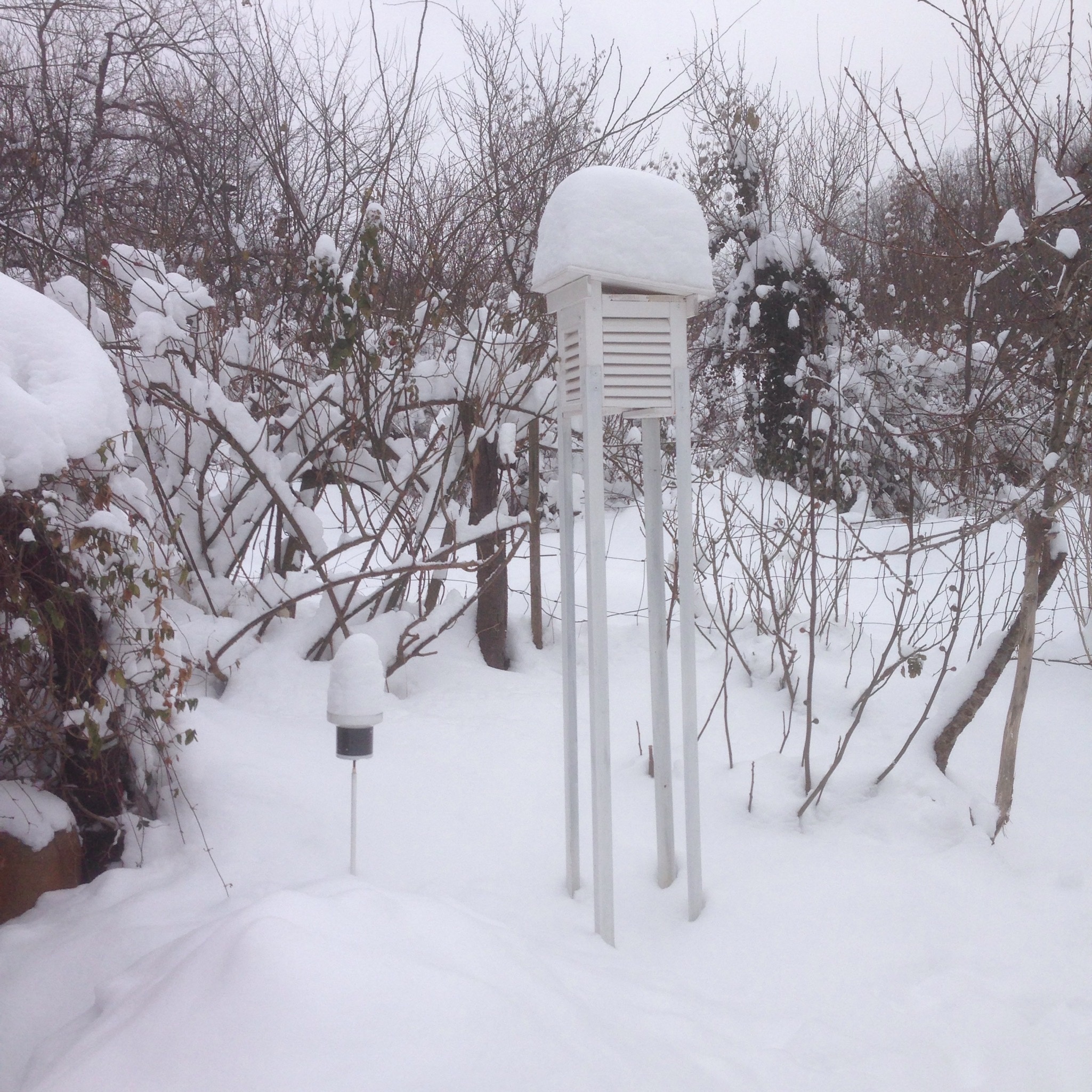
Photographs of heavy snowfall in Bulgaria: deep piles of snow in NE Bulgaria report on one of the major Bulgarian TV stations (left), heavy snowfall on the beach in the coastal city of Burgas, SE Bulgaria (middle) and snow in around a personal weather station in the mountainous town of Troyan in the middle of the country (right).

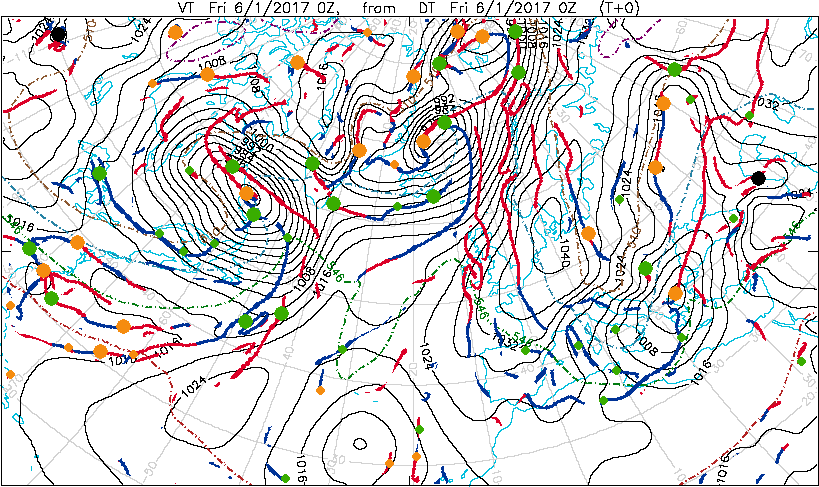
A deep Mediterranean Cyclone passing along the southern route IIIa that caused heavy snowfall and blizzards over NE Bulgaria on 6-7 January 2017.
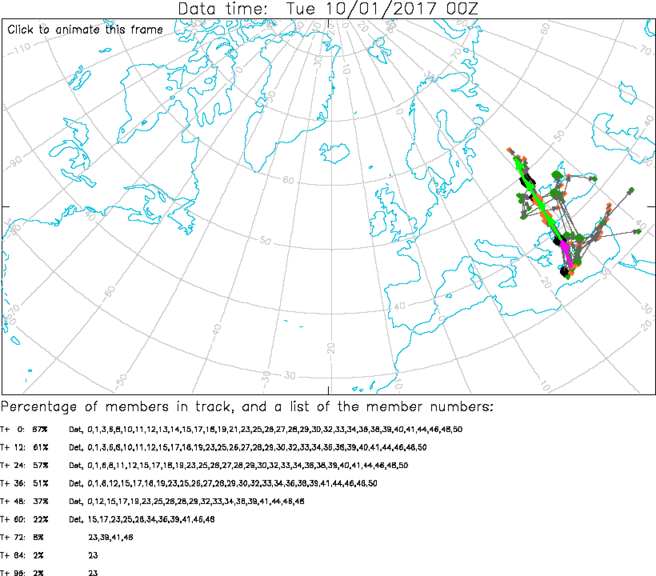
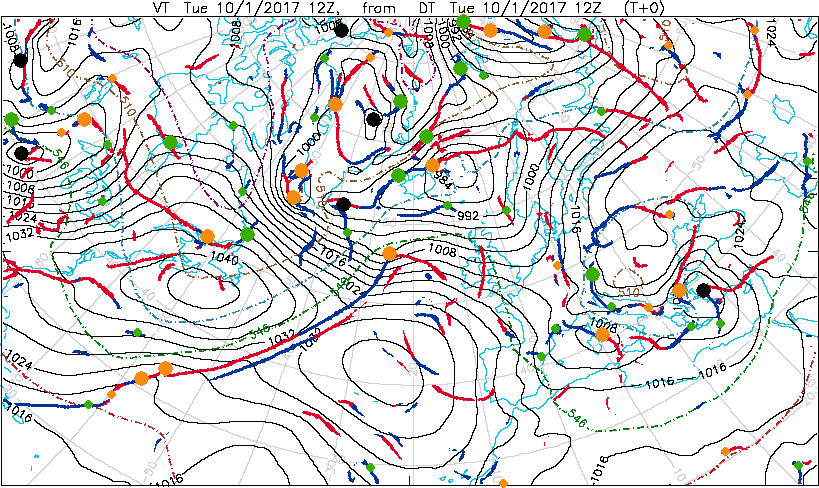
Another Mediterranean cyclone again on IIIa route caused again blizzards in NE Bulgaria on 10 January 2017.


Snow depth analysis from the Bulgarian National Met Service (NIMH) using snow depth reports and ALADIN model for 5th of January before the event (left) and 11th January (right) after two consecutive snowstorms.
The plots below show 2-metre temperature (left) and 10-metre wind speed from Sodankyla on 4 January from HRES (red) and observations (black). The model was far too warm while the wind speed was in line with observations, at least during the first part of the day.

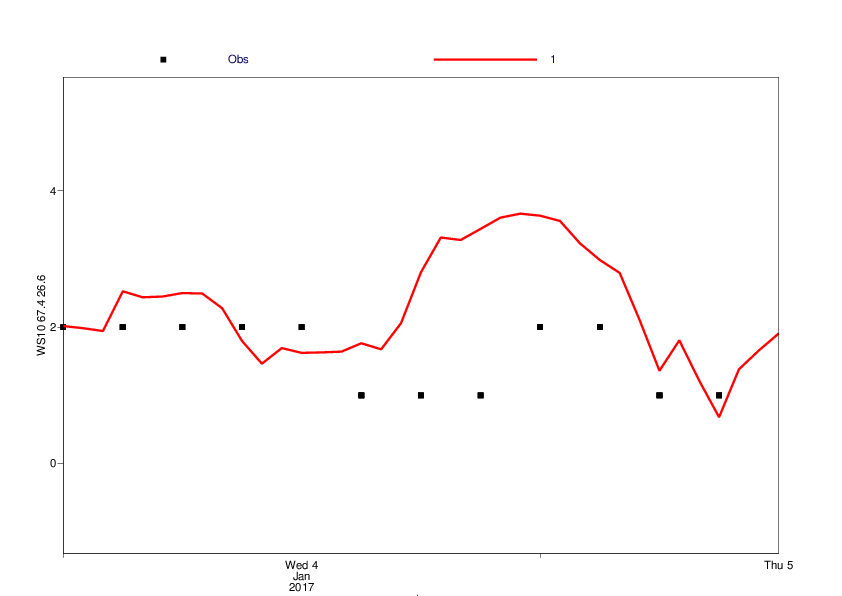
The plot below compares the model climate from reforecasts (solid) and observation climatology (dashed).
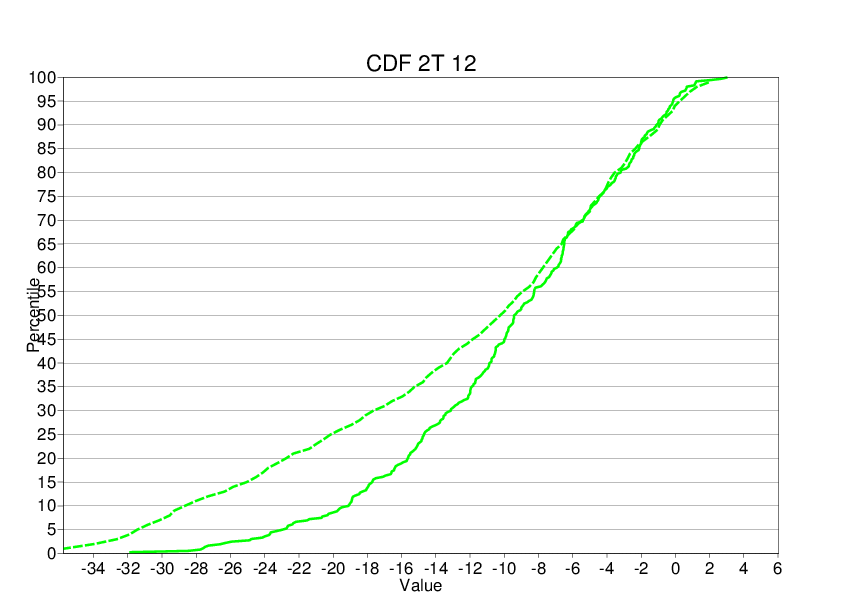
During the cold period, heavy snowfall also hit south-eastern Europe, e.g Istanbul. The plots below show observations of precipitation on 7 and 8 January and the last forecast before each accumulation period.




The plot below show the evolution of ensemble forecasts (blue) and HRES (red dot) for 2-metre temperature in Sodankyla on 5 January 00z. The osbervation was around -40C (see above).
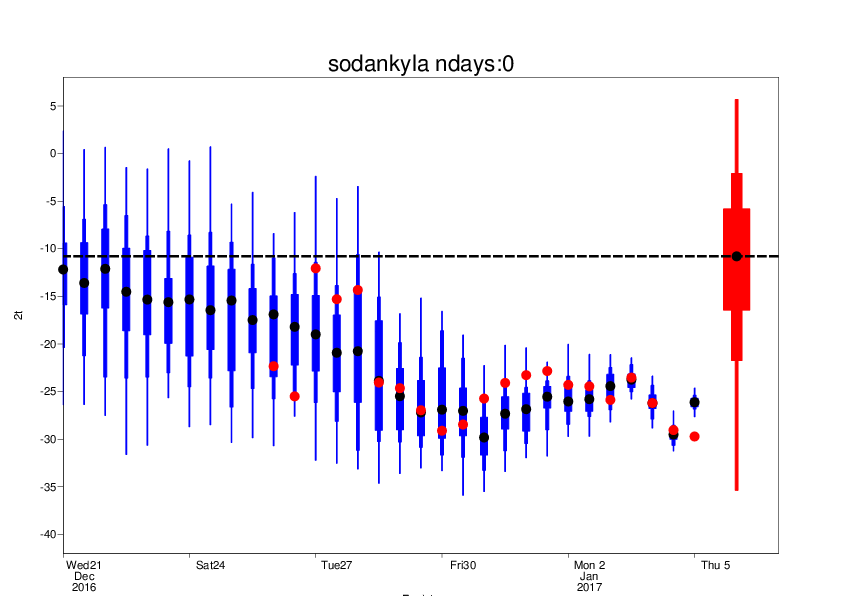
The plot below show the evolution of ensemble forecasts (blue) and HRES (red dot) for T850 over Trojan in central Bulgaria on 9 January 00z.

The plots below show weekly temperature anomalies for 2-8 January.
